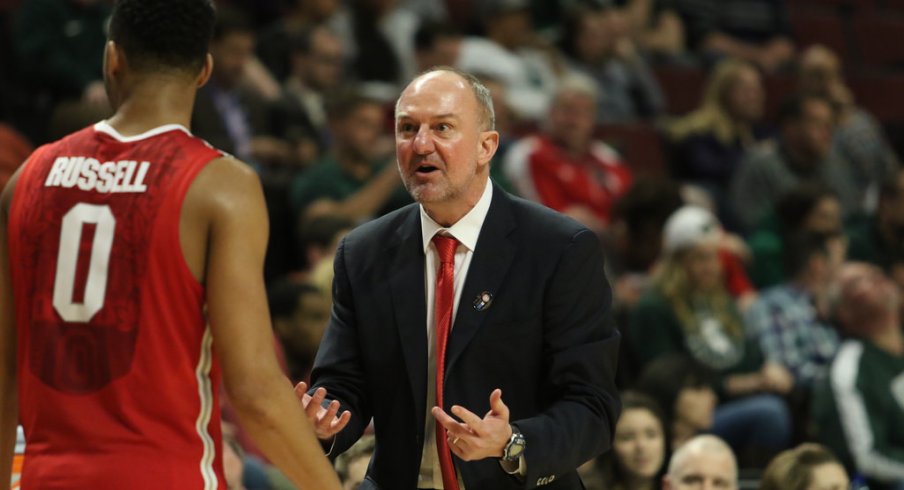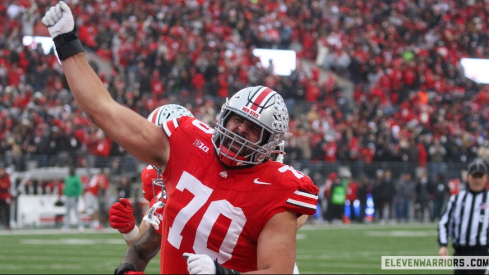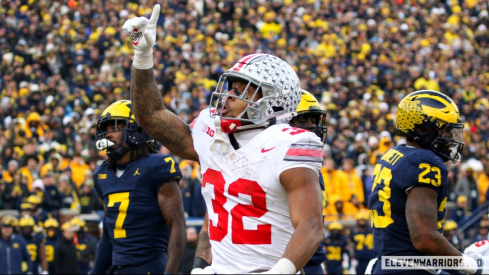Two years ago, as Joey Bosa was turning heads and making plays on the field for Ohio State as a freshman, Urban Meyer couldn’t help but smile at the thought of having him in Columbus for at least two more seasons.
Conversely, as Thad Matta watched his prized freshman, D’Angelo Russell, on the hardwood this year, he was well-aware it was likely going to be his only season as a Buckeye.
“It was probably our preseason scrimmage at West Virginia when he had 33 and he hit the game-winner,” Matta said of when he first thought Russell could be a one-and-done player. “I kind of scratched my head and said, ‘Uh oh.’ This kid, he was doing things that we hadn’t even talked about yet.”
Matta was right, of course, as Russell recently declared for the 2015 NBA Draft after a sensational season in which he was a first-team All-American and the Big Ten Freshman of the Year.
Russell’s decision to turn pro was a pretty simple one; he’s projected as a top-five pick. When Matta sat down with Russell and his father, Antonio, he told them he thought Russell should declare for the Draft.
What this shows, though, is that, in ways, Matta’s job is a bit more difficult than Meyer’s thanks to the way college basketball is currently set up.
When players come to college to play basketball now, they’re free to turn pro whenever they want as long as they stay for at least one season. In football, it’s a three-year commitment.
That means Matta, and all other college basketball coaches who haul in elite recruits year after year have to constantly be aware of their roster and how they’re managing it. They have to be prepared for every single scenario or it could set their program back for years.
In the case of Russell, the plan was always to be a two-year player. That quickly changed because of the amount of success he was having.
“I hope that people know in recruiting that I’m a man of my word. We told these guys up front, and I think this is what took them time because they’re people of their word, they told us this is a two-year commitment,” Matta said. “But there were times where literally I turned to the coaches and said, ‘Boys you better enjoy this because we ain’t got much longer with what he just did right there.’
Matta seemed like he was prepared for Russell’s departure when Ohio State accepted a commitment from four-star guard JaQuan Lyle in the middle of this past season. Like Russell, Lyle is a combo guard that can play point or off the ball. Matta knew Russell likely wasn’t going to be back and had to find a replacement for him or Ohio State would have been in big trouble.
“I think he’s an unbelievable passer, he’s got great size, he’s got great strength,” Matta said of Lyle. “He can really score the basketball. Is he a one? Is he a two? We really don’t know what he is, but he can make plays and we like that.”
This isn’t a new phenomenon, of course. The one-and-done rule has been in college basketball for some time now. But what it does it just illustrate how difficult it is for coaches to keep their rosters intact and shows how they must always be two or three steps ahead of the game.
It’s much different than football.


